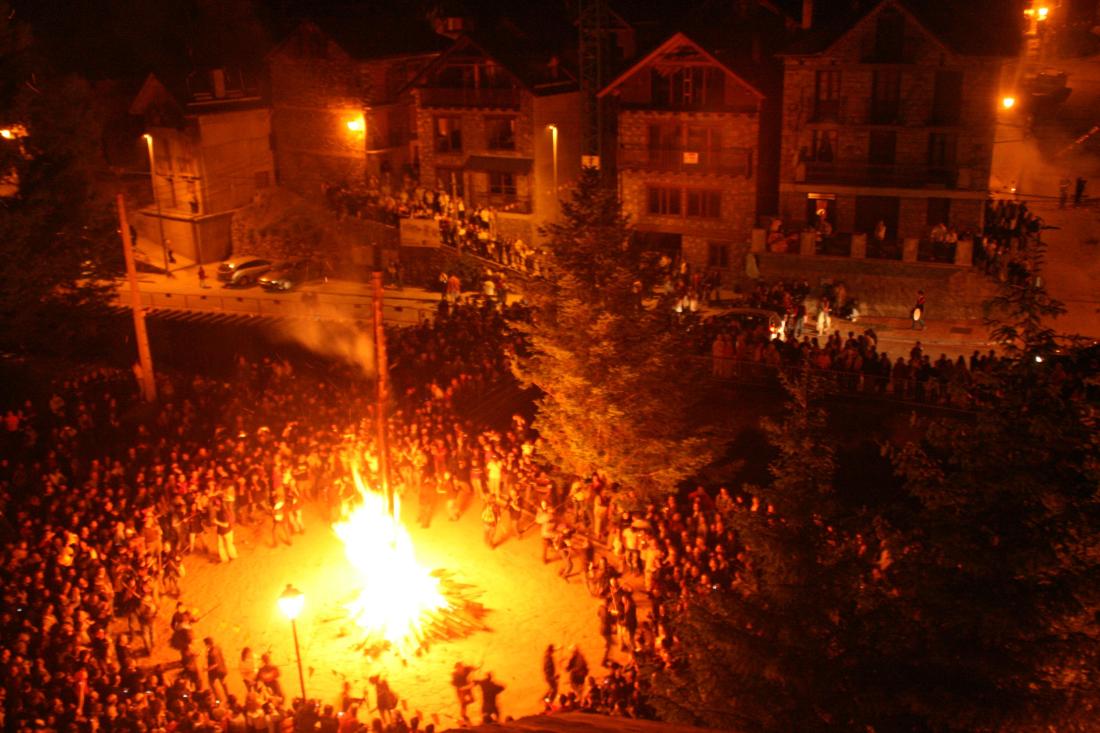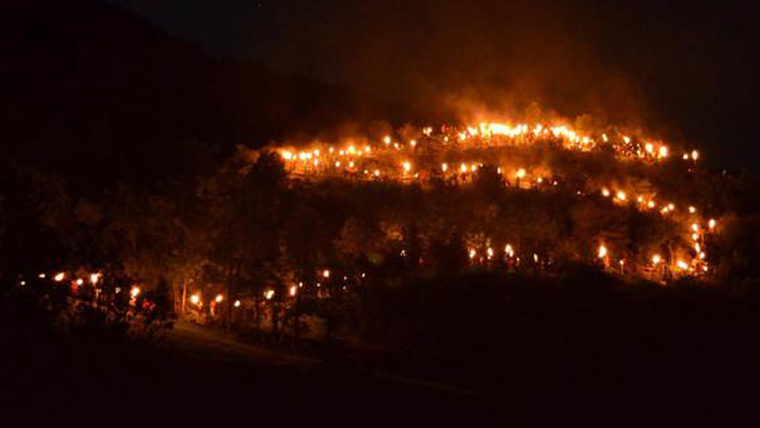On the 23rd of every June, fires are lit around Europe to celebrate both Midsummer and also St John’s Eve, however, these are particularly prevalent in Spain, where the night is a cascade of fires and fireworks, especially in Catalonia. The Pyrenees is, of course, no exception to this tradition, with many flaming torches being found processing down mountainsides and in town and village squares, with revels lasting long into the night.

Sant Joan celebrations in the Alt Aneu region. Taken from https://upload.wikimedia.org/wikipedia/commons/2/21/Les_Falles_d%27Isil_-_Sant_Joan_2008.JPG
The origins of this tradition are commonly agreed to predate the eminent St John himself, forming the central aspect to a seasonal celebration of Midsummer, hovering around the summer solstice, and several traditional practices which still survive appear to reinforce this notion. Certain plants are held to have potent qualities if gathered on this night, including (obviously) St John’s Wart, fennel, rosemary, rue, foxgloves and several others. If these are left in a bowl of water facing the moon overnight, they will acquire particular properties, and the water should be used to wash one’s face the following morning. In this aquatic vein, the water itself, either collected in the bowl or drawn from springs and wells this night, will also be imbued with a magical aspect, and if washed with the following morning can be seen as a purifying ‘shedding’ of ill luck gathered throughout the year so far. Certain modern traditions include the use of crystal or quartz around the bowl, which soaks up the moon’s rays and can be used in divinatory practices.
The fires themselves are said to ward off malign spirits, and also keep witches at bay, who are reputed to spend the night rushing around on broomsticks in order to attend Sabbaths on lakes and mountains on this night. Often, a bonfire is lit following some manner of procession, punctuated by the bangs and crackles of fireworks, and several performers swinging burning logs on chains around their heads. Some brave souls also leap over the bonfires to prove themselves and gain luck. In the Pyrenees, especially around the Lleida and Pyrénées Orientales regions, one can find some truly majestic sights, as men and women carry blazing branches and logs down the mountain to the square of the village or town below, where they will all be piled up against a specially selected trunk which acts as the nexus of the great bonfire. Sometimes, the charred trunk will be left there for the following twelve months, until it is replaced by a fresh bonfire on the next night of Sant Joan(Catalan)/San Juan(Spanish)/San Juan Eguna (Basque)/Saint Jean (French).

A vision of the fiery serpent making its way down the mountainside in the Catalan Pyrenees. Taken from: https://media-edg.barcelona.cat/wp-content/uploads/2015/12/alins_pallars_sobira_baixada_de_falles_foto_ajuntament_d_alins_web_full_gallery.jpg
People often write wishes or the names of desired love ones on scraps of paper, and push to the front of the crowd to through these into the fire itself, consigning their wishes to the heavens and hoping for them to come true over the ensuing months – heaven help the man or woman who finds themselves unusually popular during this period!
The festivities are of course richly furnished with libations of the best kind, and no doubt when the festival falls on the weekend people are especially relieved, but even when workaday matters might loom, this is an occasion for people to cut loose and enjoy watching the flames climb high into the night sky, accompanied by music, wine and the stars.
If you have the stamina, go up to the top of Canigou on the fete. Which, by the way, is celebrated in a major way in French Canada, not too far from me.
LikeLike
I’ll do my best to next year, the views would be incredible!
LikeLike